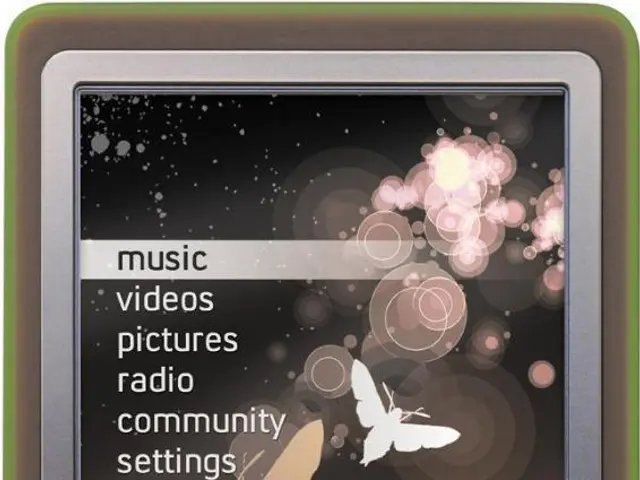Uncontrolled high blood pressure: Description, triggers, signs, remedies, and further insights
When it comes to maintaining good health, regular blood pressure checks are crucial. If a healthcare provider suspects high blood pressure, they may suggest using a blood pressure monitor at home or recommend 24-hour ambulatory blood pressure monitoring.
There are two types of hypertension that require special attention: paroxysmal and labile hypertension.
Understanding Paroxysmal and Labile Hypertension
Paroxysmal hypertension is characterized by sudden, severe spikes in blood pressure that often occur without clear external triggers. On the other hand, labile hypertension refers to blood pressure that fluctuates more frequently and less severely, often influenced by emotional stress or physical activity.
Common Causes
Paroxysmal hypertension is often idiopathic but can be related to various conditions such as pheochromocytoma, baroreceptor dysfunction, autonomic nervous system disorders, or rare causes of sudden sympathetic activation. Labile hypertension is usually associated with emotional stress, anxiety, pain, or autonomic nervous system dysfunction.
Symptoms
Symptoms of paroxysmal hypertension may include a sudden onset of very high blood pressure, accompanied by symptoms of catecholamine excess (if pheochromocytoma-related) such as headache, palpitations, sweating, and anxiety. Labile hypertension, however, may present with blood pressure fluctuations between normal and elevated, with symptoms that are often milder or absent.
Treatments
Treatment for paroxysmal hypertension focuses on controlling acute spikes and may include alpha and beta blockers, especially if pheochromocytoma is suspected or confirmed. Treatment for labile hypertension targets the underlying causes such as stress management, addressing sleep apnea, lifestyle modification, and sometimes mild antihypertensive medications.
Additional Context
Autonomic nervous system dysfunction can contribute to both types of hypertension, with labile patterns being more classically linked. Sleep apnea is an important reversible cause of blood pressure variability and hypertension, including labile hypertension.
It's important to note that there is no established threshold for diagnosing labile hypertension, and people may experience fluctuations in blood pressure normally. Untreated labile hypertension can cause an increased risk of various health conditions over time.
To minimize the risk of labile hypertension, consider stress management, managing anxiety levels, giving up smoking, limiting salt intake, limiting alcohol consumption, avoiding certain prescription medications, and reducing stress associated with doctor visits for white coat hypertension.
Remember, regular blood pressure checks are key to early detection and treatment. Whether you're using a home monitor or visiting a healthcare provider, staying informed about your blood pressure is essential for maintaining a healthy lifestyle.
- Regular blood pressure checks are crucial for maintaining good health, especially for identifying conditions like paroxysmal and labile hypertension.
- Paroxysmal hypertension features sudden, severe spikes in blood pressure, occurring without clear external triggers.
- Labile hypertension, on the other hand, refers to blood pressure that fluctuates more frequently and less severely, often influenced by emotional stress or physical activity.
- Paroxysmal hypertension can be idiopathic or related to conditions such as pheochromocytoma, baroreceptor dysfunction, autonomic nervous system disorders, or rare causes of sudden sympathetic activation.
- Labile hypertension is usually associated with emotional stress, anxiety, pain, or autonomic nervous system dysfunction.
- Symptoms of paroxysmal hypertension may include a sudden onset of very high blood pressure, accompanied by symptoms of catecholamine excess.
- Labile hypertension may present with blood pressure fluctuations between normal and elevated, with symptoms that are often milder or absent.
- Treatment for paroxysmal hypertension focuses on controlling acute spikes, using medications like alpha and beta blockers, especially if pheochromocytoma is suspected or confirmed.
- Treatment for labile hypertension targets the underlying causes, including stress management, sleep apnea management, lifestyle modification, and mild antihypertensive medications.
- Autonomic nervous system dysfunction can contribute to both types of hypertension, with labile patterns being more classically linked.
- Sleep apnea is an important reversible cause of blood pressure variability and hypertension, including labile hypertension.
- To minimize the risk of labile hypertension, consider strategies like stress management, managing anxiety levels, giving up smoking, limiting salt intake, and reducing stress associated with doctor visits.
- Regular blood pressure checks are essential for maintaining a healthy lifestyle, helping in early detection and treatment of various chronic diseases such as hypertension and its related health conditions.






